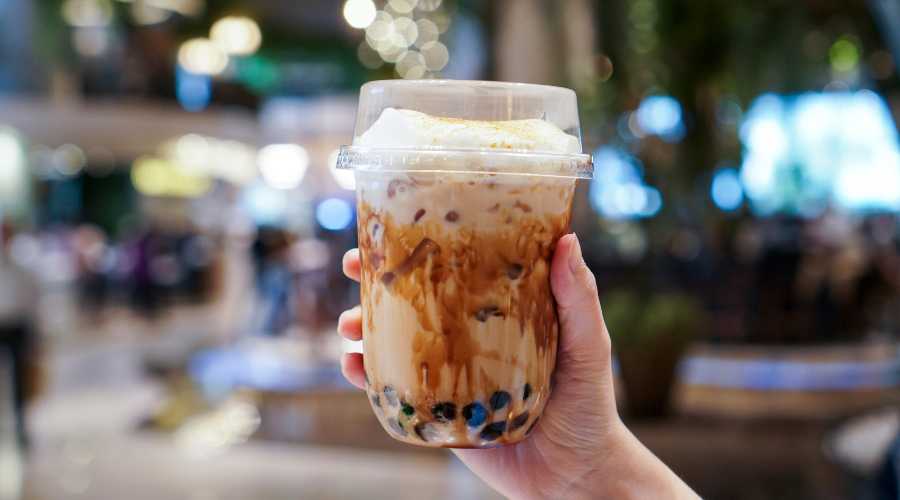Bubble tea also known as boba or pearl milk tea, has its roots in Taiwan in the 1980s.
This delicious and unique beverage has since gained widespread popularity across the globe, making it an enticing business opportunity for entrepreneurs.
If you’re considering starting a bubble tea business, it’s crucial to develop a solid plan and strategy.
This comprehensive guide will walk you through the essential steps of starting a successful bubble tea business.
Market research and feasibility study
Before diving into the world of bubble tea, it’s essential to conduct thorough market research and a feasibility study to ensure your business idea has a strong foundation.
Identifying your target market
Demographics: Consider the age, income, and interests of your potential customers. Bubble tea often appeals to younger generations, but it can also attract a diverse clientele. Understanding your target audience will help you develop a tailored marketing strategy.
Location and foot traffic: A prime location with high foot traffic is crucial for your bubble tea business’s success. Look for areas with a high concentration of your target demographic, such as near schools, universities, or shopping centers.
Analyzing competition
Direct competitors: Identify other bubble tea shops in your area and assess their offerings, pricing, and unique selling points. This will help you determine your competitive edge and identify gaps in the market.
Indirect competitors: Besides bubble tea shops, consider other beverage businesses such as coffee shops or smoothie bars that could potentially compete for your target customers’ attention.
Determining the feasibility of your business idea
After conducting market research and analyzing competition, assess the feasibility of your business idea. Consider factors such as demand, competition, and potential profitability to determine whether your bubble tea business is likely to succeed.
Creating a Business Plan
Developing a detailed business plan is crucial for outlining your business objectives, strategies, and financial projections. A comprehensive business plan should include the following sections:
Executive summary: This section should provide an overview of your bubble tea business, including its mission, objectives, and unique selling points.
Company description and mission statement: Describe your business’s core values and vision, as well as the specific goals you hope to achieve.
Products and services offered
Bubble tea menu: Outline your bubble tea offerings, including a variety of flavors, tea bases, and milk options. Consider incorporating unique and creative options to set your business apart.
Add-ons and customization options: Offer customers the ability to customize their bubble tea with a selection of toppings, such as tapioca pearls, fruit jelly, and popping boba. This enhances the customer experience and sets your business apart.
Market analysis: Detail your target market, competitive landscape, and industry trends to demonstrate your understanding of the market and potential opportunities.
Marketing and sales strategy: Outline how you plan to promote your bubble tea business, including online and offline marketing tactics, as well as strategies for driving sales.
Management and organizational structure: Describe your team’s roles and responsibilities, including your own, and outline your business’s organizational structure.
Financial projections and funding requirements: Provide projections for revenues, expenses, and profits, as well as any funding needed to start and grow your business.
Choosing the right location
Selecting the perfect location for your bubble tea shop is crucial for attracting customers and driving sales.
Factors to Consider
Visibility: Ensure your shop is easily visible from the street and accessible to pedestrians and vehicles.
Accessibility: Consider factors such as parking availability, proximity to public transportation, and ease of access for customers.
Proximity to competitors and complementary businesses: While you don’t want to be too close to direct competitors, locating your shop near complementary businesses, such as restaurants or retail stores, can help drive foot traffic to your bubble tea shop.
Lease or purchase considerations: Evaluate the pros and cons of leasing versus purchasing a property for your shop, taking into account factors such as budget, flexibility, and long-term plans.
Negotiating favorable terms: Work with a real estate agent or broker to negotiate favorable lease or purchase terms, including rent, duration, and possible tenant improvements.
Designing your bubble tea shop
Creating an inviting atmosphere and an efficient layout is key to attracting customers and ensuring smooth operations.
- Creating a welcoming atmosphere: Design your shop to be warm, inviting, and visually appealing to entice customers to visit and stay.
- Efficient layout for service and production: Plan a layout that streamlines the process of preparing and serving bubble tea while providing ample seating and waiting areas for customers.
- Incorporating branding elements: Include your business’s logo, colors, and other branding elements throughout the shop’s design to create a cohesive and memorable experience.
- Compliance with local regulations and health codes: Ensure your shop meets all local building codes, zoning regulations, and health department requirements to avoid fines or closures.
Sourcing ingredients and equipment
Selecting high-quality ingredients and reliable equipment is crucial for producing delicious bubble tea and maintaining efficient operations.
Identifying reliable suppliers: Research and contact potential suppliers to source the best ingredients and equipment at competitive prices.
Selecting quality ingredients
Tea: Choose a variety of high-quality tea leaves, including black, green, and oolong, to create a diverse menu.
Toppings: Source fresh and flavorful toppings, such as tapioca pearls, fruit jelly, and popping boba, to enhance your bubble tea offerings.
Syrups and flavorings: Select a range of syrups and flavorings to create unique and customizable bubble tea options for your customers.
Choosing the right equipment
Brewing equipment: Invest in reliable and efficient tea brewing equipment to ensure consistent taste and quality.
Sealing machines: Select a high-quality sealing machine for packaging your bubble tea professionally and efficiently.
Refrigeration and storage: Ensure adequate refrigeration and storage space for perishable ingredients and prepared bubble tea.
Hiring and training staff
A strong team is essential for providing excellent customer service and maintaining smooth operations.
Recruiting the right team members: Look for candidates with excellent interpersonal skills, a strong work ethic, and a passion for bubble tea.
Developing a comprehensive training program
Bubble tea preparation techniques: Train staff on proper tea brewing, ingredient handling, and drink assembly procedures to ensure consistent quality.
Customer service: Teach staff to provide friendly, attentive, and efficient customer service to create a positive experience for patrons.
Health and safety protocols: Ensure staff are familiar with all required health and safety practices, including proper food handling, sanitation, and workplace safety.
Employee retention strategies: Implement policies and incentives to retain your best employees, such as competitive pay, flexible scheduling, and opportunities for growth.
Marketing and promotion
Promoting your bubble tea business effectively is key to attracting and retaining customers.
Building an online presence
Website: Create a user-friendly website that showcases your menu, location, and unique selling points, and enables customers to place orders online if desired.
Social media: Engage with customers and promote your business through popular social media platforms such as Instagram, Facebook, and Twitter.
Local marketing strategies
Grand opening events: Host a grand opening event to generate buzz and attract customers to your new shop. Partnerships with local businesses: Collaborate with nearby businesses to cross-promote each other’s offerings and increase visibility within the community.
Sponsorships and community involvement: Get involved in local events and sponsorships to build brand awareness and goodwill in your community.
Ongoing promotions and loyalty programs: Develop regular promotions, special offers, and loyalty programs to encourage repeat business and customer loyalty.
Managing day-to-day operations
Maintaining smooth operations is essential for the long-term success of your bubble tea business.
- Implementing efficient workflows: Establish workflows that optimize employee efficiency, minimize wait times, and ensure a high level of customer satisfaction.
- Inventory management and cost control: Implement inventory management systems and cost control measures to minimize waste, maintain adequate stock levels, and optimize profit margins.
- Monitoring key performance indicators (KPIs): Regularly track KPIs, such as sales, customer traffic, and average transaction value, to assess your business’s performance and identify areas for improvement.
- Adapting and iterating based on feedback and trends: Continuously gather feedback from customers and stay abreast of industry trends to make informed decisions and adjust your strategies as needed.
Conclusion
Starting a successful bubble tea business requires thorough planning, strategic execution, and the ability to adapt to changing market conditions.








